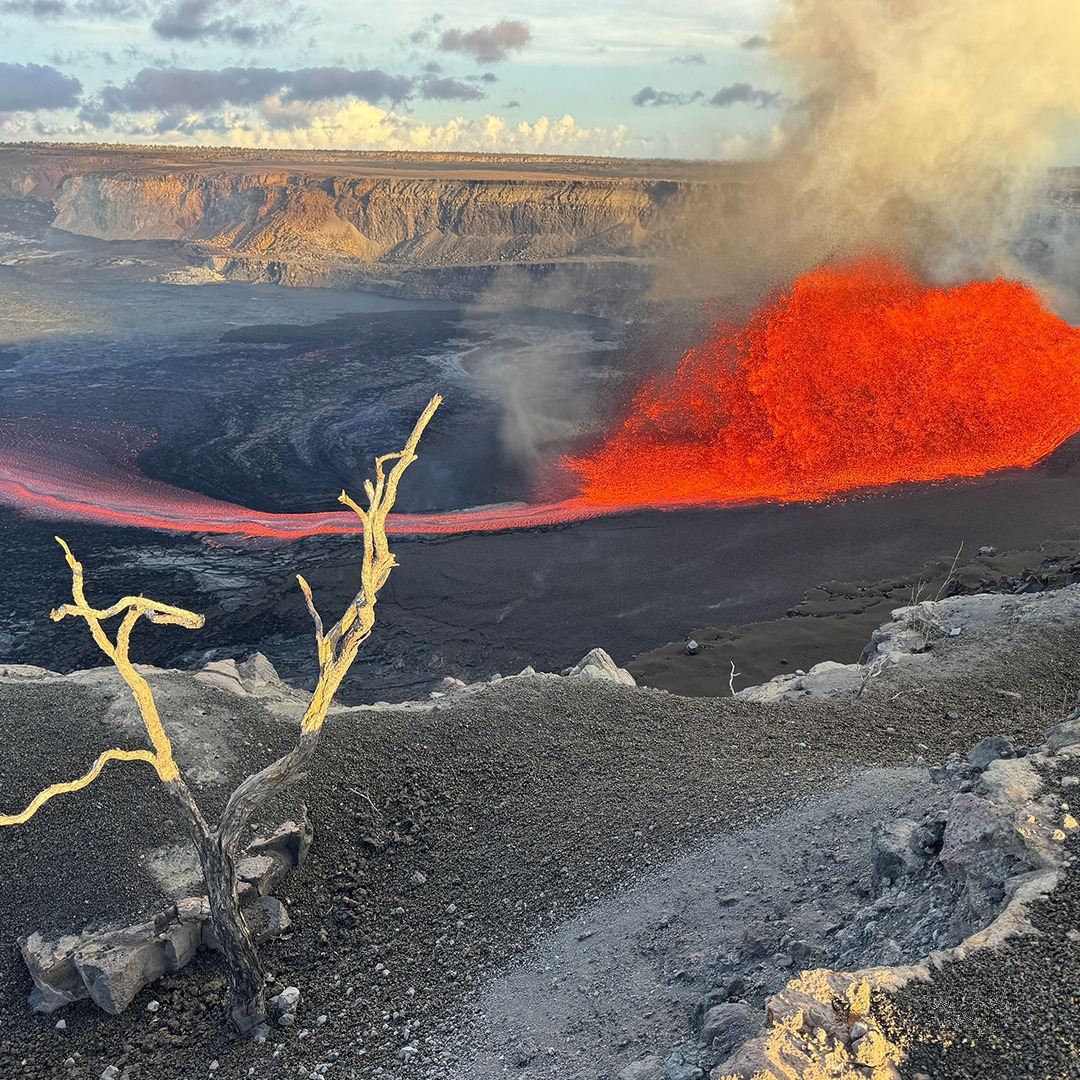Hawaii’s Kilauea volcano erupted once more on Friday, marking its 31st eruption since last December. This famous volcano, one of the world’s most active, lit up its summit with spectacular fountains of glowing lava reaching up to 100 feet high from Halemaʻumaʻu Crater. The dramatic display captivated locals, scientists, and visitors who gathered to witness the fiery spectacle.
The eruption started early at the volcano’s north vent inside the summit crater, beginning with continuous spattering and progressing to lava overflowing onto the crater floor. By afternoon, molten lava was shooting into the air in full fountains. Thankfully, all activity remained within the crater, posing no threat to nearby communities. The eruption has drawn crowds both in person and online, with the U.S. Geological Survey providing livestreams of the event. Park volunteer Janice Wei described the roar of the lava fountains as sounding like a jet engine or crashing waves, and the heat could be felt from over a mile away.
Kilauea sits on the largest island in Hawaii, renowned not just for its powerful eruptions but also for its spiritual importance. Native Hawaiian culture regards the crater as the home of Pele, the goddess of volcanoes.
According to Ken Hon, lead scientist at the Hawaiian Volcano Observatory, magma flows into a deep, lower chamber beneath Halemaʻumaʻu at about five cubic yards per second. As this chamber inflates, pressure builds and forces the magma upward into a higher chamber, then pushes it through fractures to the surface, creating the spectacular fountains. The gas-laden magma releases pressure suddenly, causing bursts that can sometimes reach heights over 1,000 feet.
The eruption pattern at Kilauea is rare—this is only the fourth time in 200 years that several lava fountain episodes have happened, with past cycles in 1959, 1969, and a famous one beginning in 1983 that led to a continuous 35-year eruption ending in 2018.
While the frequency of eruptions is impressive, scientists remain uncertain about how long this activity will continue or how it might change. In past cycles, pressure eventually opened new vents at lower elevations, allowing magma to flow steadily and reshape the landscape while threatening nearby communities. Alternatively, the activity might cease if the magma supply diminishes.
Researchers use sensitive instruments around the volcano to detect earthquakes and subtle ground movements to anticipate changes. As Ken Hon explained, it’s like watching ants try to understand an elephant’s every move—complex and challenging.
Recent fountains have lacked the towering height of earlier episodes, which University of Hawaii geologist Steve Lundblad attributes to widening vents that ease the pressure of escaping lava. Even so, the displays remain spectacular.
Alongside scientific study, cultural experts such as Huihui Kanahele-Mossman from the Edith Kanakaʻole Foundation emphasize the deep spiritual significance of Kilauea’s eruptions. To Native Hawaiians, lava is not only destructive but a creative force that builds land and sustains life. The foundation preserves Hawaiian traditions by interpreting eruption phenomena through ancient chants and ceremonies, connecting modern eruptions with stories of Pele, the goddess.
The eruption has drawn many visitors to Hawaii Volcanoes National Park, which has seen a steady rise in numbers this year, with a nearly 50 percent increase in April compared to the previous year. Park officials caution visitors to stay on marked paths and take safety seriously, as volcanic terrain has hidden dangers like unstable ground and toxic gases. Night visitors are advised to bring flashlights and remain aware of potential health hazards.
Though these eruptions may be brief, they are a powerful reminder of the earth’s dynamic forces. For scientists, each event adds to understanding a world-famous volcano. For Hawaiians, it reaffirms a sacred connection to Pele and their island heritage. And for tourists, it offers a breathtaking glimpse into nature’s fiery heart.


